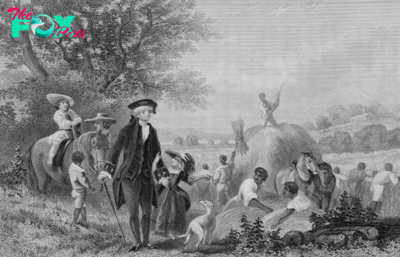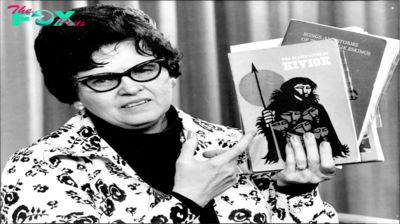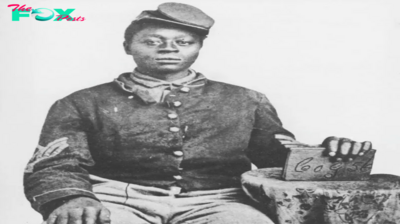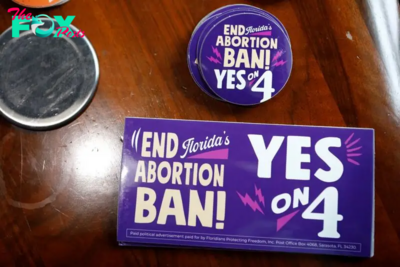History
Americans Had Imaginary Girlfriends Long Before AI Companions
This Valentine’s Day, lonely hearts have the option to look for love in romantic simulations. Tell your chatbot of choice what you like and it delivers, creating an emotional exchange so intoxicating that some users have reported falling in love with their virtual companions. Powered by the controversial artificial intelligence (AI) industry, companion chatbots seem to mimic the flirting, affection, and eroticism characteristic of romantic intimacy. Critics of girlfriend and boyfriend simulations emphasize the limits of virtual companionship and the risks, including demographic decline, if chatbots replace flesh and blood partners, and sexual harassment from aggressive virtual companions.
But some proponents tout the bots’ potential to solve what U.S. Surgeon General Dr. Vivek Murthy recently called the loneliness epidemic. Earlier this month, San Mateo, Calif., became the first county in the nation to declare “loneliness a public Health crisis.” Left unchecked, many public officials and cultural commentators warn, loneliness, particularly pronounced among men, will take a dramatic toll on the nation’s physical and social Health. Enter the 21st century solution: generative AI.
Read More: AI-Human Romances Are Flourishing—And This Is Just the Beginning
While the tech may be relatively new, the idea of fabricating girlfriends to solve national problems isn’t. Nearly 200 years ago, white Americans created and idealized dead “maidens” to help claim the West for the United States. In the 19th century, markers of what were called “Maiden’s Graves” along the Overland Trail—the term that describes the multiple overland wagon migration routes to the Pacific Coast—became emblems of sacrifice for white Americans and imagined potential romantic partners for male railroad workers, settlers, and tourists heading west.
Imagining dead young women as lovers isn’t as strange as it seems. In early 19th century America, white Protestants saw corpses as objects of beauty and desire. In the 1820s, popular concerns that dead women buried in crowded urban graveyards might be exposed to the “vulgar gaze” of strange men helped spur cemetery reforms. Tales of necrophilia also entered the American literary canon. In Edgar Allen Poe’s “Annabel Lee” the lonely widower of the titular young bride spends his nights lying “down by the side” of her “sepulchre…by the sea.”
Folkloric myths also told of men who remained eternally devoted and permanently celibate after the deaths of their beautiful young lovers. In one popular nationalist legend, the fiancée of New Jersey colonist Jane McCrea was said to have spent the rest of his years alone with only his dead beloved’s scalp and its “long silken tresses” for companionship.
The beautiful “Maid McCrea,” who was allegedly murdered and scalped by British-allied Native warriors during the Revolution, also became a figure of national attraction. In 1804, John Vanderlyn painted a terrified and nearly exposed McCrea in the seconds before the porcelain-skinned beauty was supposedly struck down. In the 1850s, literary luminary Washington Irving stoked nationalistic fervor by referencing the colonial maiden’s violent death, declaring that revolutionary “armies sprang” from the “blood of this unfortunate girl.” Thanks to these links between a virgin’s death and the republic’s birth, U.S. citizens began making pilgrimages to McCrea’s grave in eastern New York to honor her ultimate sacrifice for the nation.
Read More: The Forgotten History of the Native Americans Who Helped the Underground Railroad
Around this same time, a series of cholera epidemics turned the 2,000-mile Overland Trail into a string of graves. While all emigrant graves became signals of national suffering and sacrifice, the graves of beautiful women were said to command especial devotion. Stories sprung up of fiancés and husbands carting marble tombstones to remote gravesites by wheelbarrow and making multiple pilgrimages to their beloveds’ tombs. Significantly, like the fiancé of the ill-fated McCrea, these emigrant men remained unmarried and presumably physically celibate: permanently attached to beautiful young women even as they matured and aged.
Men, however, did not have to know these dead women to see them as imagined romantic partners. One of these young dead maidens who attracted the attention of strangers was Lucinda Duncan. Duncan died in 1863 and was buried in eastern Nevada just outside the town of Beowawe. A few years later, after the completion of the transcontinental railroad in 1869, and the rise of rail tourism, guidebooks detailed Lucinda’s history, explaining that the girl was just 18 years old when she fell sick on the trail and died. As railroad cars sped across the Nevada desert, tourists were directed to look for the towering cross above her gravesite, placed there by railroad engineers whose sympathies were “aroused” by the maiden’s decaying grave. Thus aroused, the engineers replaced the deteriorating marker with a large wooden cross and surrounded it with a wooden fence—repairs they would not have made for “a representative of the sterner sex,” as one guidebook author declared.
Settlers who moved into the area also perpetuated the maiden’s memory, using Duncan’s grave as the seed of the cemetery for their community, and repainting the cross every spring. Through tending this maiden’s marker, settlers linked their history to fragility and suffering rather than strength and aggression. Railroad workers also continued to protect the maiden’s grave. The cover photo of the Southern Pacific’s May 1958 bulletin showed five male workers with shovels in hand bowing their heads in reverence to the maiden’s grave.
Read More: Why We've Gotten 'Custer's Last Stand' Wrong for Nearly 150 Years
But this venerated maiden was no more real than the chatbots who sweet-talk users today. Duncan was also a fantasy for many. At the time of her death in 1863, Duncan she was not a teen at all, but a middle-aged woman, a mother, and a grandmother, buried by her fellow Travelers in a grave covered with boulders to keep wolves away.
The wolves may never have come, but railroad promoters and settlers did, discovering her remains and then crafting their own stories of a dead teen girl. Railroad History-makers restyled Duncan—a woman with a long, multi-dimensional life—into a young girl who, in her imagined youth and purity, could better represent the fantasy of the virtuous maiden.
That message endured at her grave until 1997, when the Oregon-California Trails Association (OCTA) placed a marker at the site explaining Duncan’s true identity. Even so, the white cross towering overhead continues to bear the words “Maiden’s Grave,” and the site remains an avatar for innocent sacrifice in the name of westward migration.

Today, proponents and critics of AI romantic simulations have focused on questions of intimacy, loneliness, and sociability. But companion chatbots may already be serving other social and political purposes. Maiden’s graves appealed to 19th-century Americans primed to see virginal young women, even dead ones, as the ideal romantic companions. But maiden’s graves did more than that. They became ciphers for white American attempts to cloak the violence of expansion in a guise of peaceful suffering rather than aggressive dispossession. Today, hopes that AI can solve loneliness seem similarly misguided. Just as romanticized maiden’s graves distracted from the violence and destruction of colonialism, so does the hope for AI companionship distract us from Technology’s destruction of community and human connection.
Sarah Keyes is a history professor and the author of American Burial Ground: A New History of the Overland Trail (University of Pennsylvania Press, 2023).
Made by History takes readers beyond the headlines with articles written and edited by professional historians. Learn more about Made by History at TIME here. Opinions expressed do not necessarily reflect the views of TIME editors.
-

 History1d ago
History1d agoEven George Washington Was a Tyrant
-

 History2d ago
History2d agoWhat Democrats Can Learn from America’s First Black Voters
-

 History3d ago
History3d agoHow Celebrities Changed America’s Postpartum Depression Narrative
-

 History4d ago
History4d agoThe Woman Whose Crusade Gave Today’s Book-Banning Moms a Blueprint
-

 History1w ago
History1w agoHow Black Civil War Patriots Should Be Remembered This Veterans Day
-

 History1w ago
History1w agoThe Democratic Party Realignment That Empowered Trump
-

 History1w ago
History1w agoWhy People Should Stop Comparing the U.S. to Weimar Germany
-

 History1w ago
History1w agoFlorida’s History Shows That Crossing Voters on Abortion Has Consequences

















